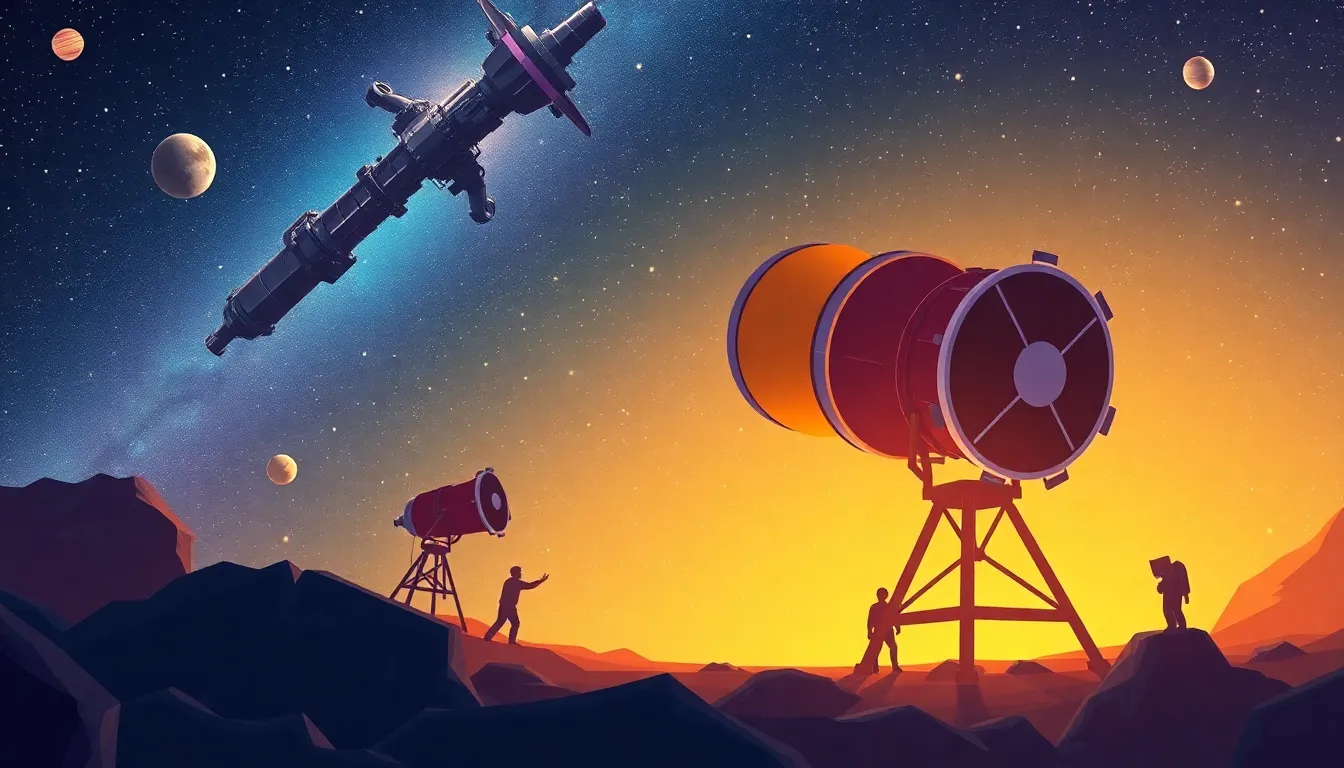
🌌 the Amazing James Webb Space Telescope
Introduction
Imagine a giant eye floating high above Earth, able to see the first stars that ever lit up the universe. That eye is the James Webb Space Telescope (Jwst) – the newest and most powerful space telescope ever built. In the next few pages we’ll explore how it works, why it’s so special, and what it can teach us about the cosmos.
1. Why We Need a New Telescope
The Problem with Old Telescopes
The Hubble Space Telescope has been snapping beautiful pictures of space since 1990, but it mostly looks at Visible Light—the same kind of light we see with our eyes. Many cosmic objects, such as newborn stars and distant galaxies, shine brightest in Infrared Light, which is invisible to us.
Cause ➜ Effect
- Cause: Light from far‑away objects travels billions of years and gets stretched (or “red‑shifted”) into infrared wavelengths.
- Effect: Hubble can’t see those objects clearly, but JWST can, because it’s built to detect infrared light.
Vocabulary: Infrared – a type of light with longer wavelengths than visible light; we feel it as heat.
2. How JWST Works
A Giant Mirror
JWST’s primary mirror is 6.5 meters (about 21 feet) wide—almost three times larger than Hubble’s. It’s made of 18 tiny Hexagonal segments that fold up for launch and then unfold in space.
- Cause ➜ Effect: A larger mirror gathers more light, so the telescope can see fainter, more distant objects.
Sunshield – the Space Blanket
To detect faint infrared signals, JWST must stay Extremely Cold (around –233 °C). It carries a five‑layer sunshield the size of a tennis court that blocks heat from the Sun, Earth, and Moon.
The Instruments
JWST has four scientific instruments, each like a different camera:
| Instrument | What It Does |
|---|---|
| NIRCam (Near‑Infrared Camera) | Takes sharp pictures of stars and galaxies. |
| NIRSpec (Near‑Infrared Spectrograph) | Splits light into a rainbow to study chemical ingredients. |
| MIRI (Mid‑Infrared Instrument) | Looks at cooler objects like dust clouds and forming planets. |
| FGS‑NIRISS (Guidance Sensor & Imager) | Helps the telescope point precisely and studies exoplanet atmospheres. |
Vocabulary: Spectrograph – an instrument that spreads light into a spectrum, like a prism, revealing the composition of the source.
3. What JWST Has Discovered So Far
- First Light: JWST captured its very first images in July 2022, showing stunning details of the Pillars of Creation in infrared.
- Ancient Galaxies: It has already spotted galaxies that formed just a few hundred million years after the Big Bang—much earlier than we could see before.
- Exoplanet Atmospheres: By studying the light that passes through an exoplanet’s atmosphere, JWST can detect gases such as water vapor and even hints of Biosignatures (signs that could indicate life).
Did you know? 🌟 The JWST’s mirror is coated with a thin layer of gold because gold reflects infrared light better than any other metal!
4. Mini Experiment: “make Your Own Infrared Detector”
You don’t need a space telescope to explore infrared—just a few household items!
Materials
- A regular TV remote control
- A smartphone with a camera
- A piece of dark paper or cardboard
Steps
-
Turn on the remote’s infrared LED by pressing any button.
-
Point the remote at the dark paper.
-
Open your phone’s camera and look at the remote’s tip through the screen (don’t take a
-
You’ll see a tiny bright dot on the phone screen where the infrared light hits – you can’t see it with your eyes, but the camera can detect it.
-
Try moving the remote farther away or covering part of the LED with your finger; notice how the dot gets dimmer or disappears.
Safety tip: Never look directly at the LED with your eyes, and don’t point the remote at anyone’s face.